Brechin
City
Formed 1906
Founder member of Scottish Division Three 1923. Joined the Scottish Alliance in 1926 after the collapse of Division Three.
Elected to Scottish Division Two 1929. Relegated to the Highland League 2021.
Kit History
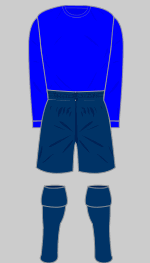
1906-1908 i s
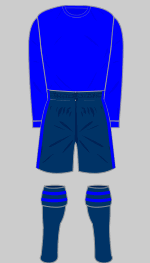
1908-1909 i
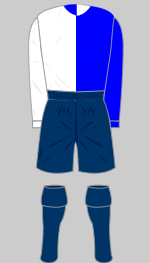
1909-1910 m
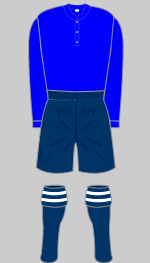
1910-1911 i

1911-1926
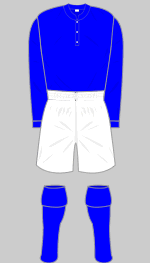
1926-1929 i
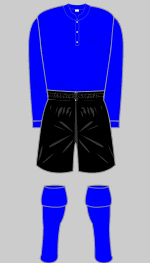
1927-1929 Away i
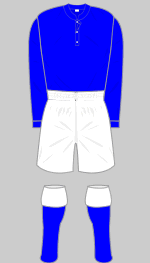
1930-1931 i

1931-1932 i
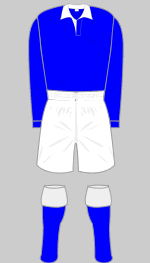
1932-1934 i
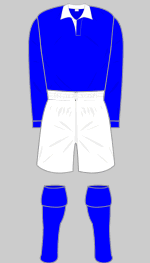
1934-1935 i
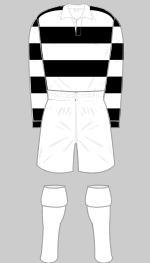
1935-Sept 1936 k
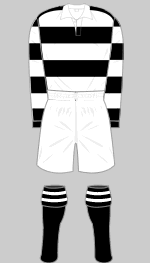
Oct 1936-1937 e g i
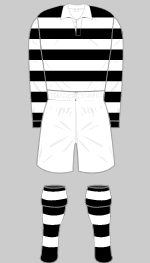
1937-1938 i
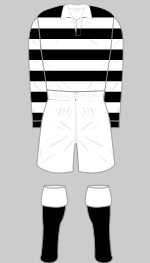
1938-1939 i
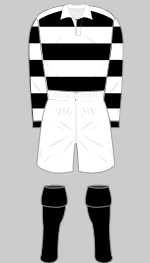
1945-1946 i

1946-1949
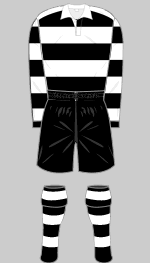
1949-1951 a i
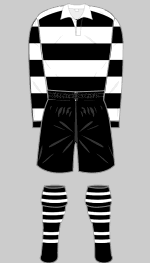
1952-1954 i
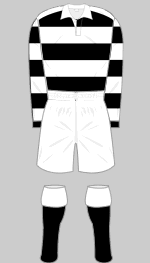
August 1954 f i
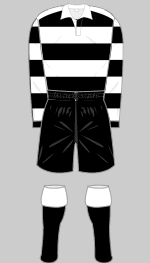
Sept 54-1955 i
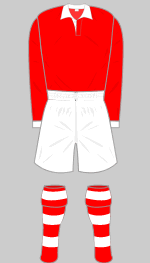
1955-1956 i t
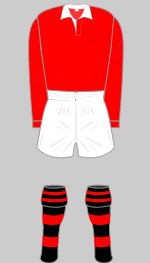
1956-1957 u
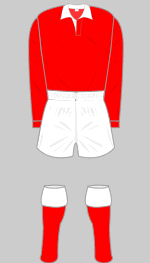
1957-1960 i
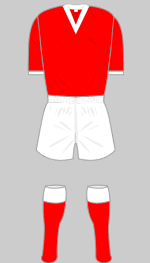
1960-1961 i
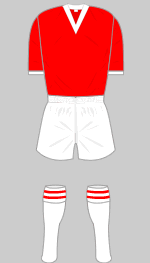
1961-1963 i
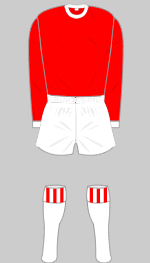
1964-1968 f i
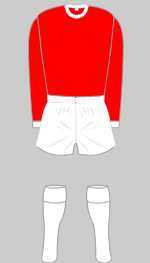
1964-1968 alt
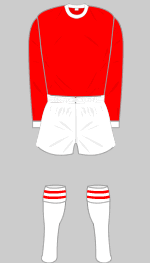
1968-1969 i
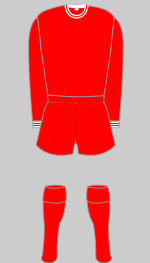
1969-1970 a i
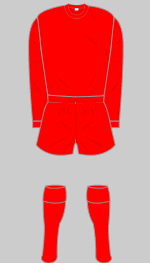
1970-1975 i
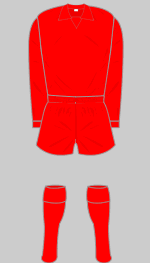
1975-1976 i
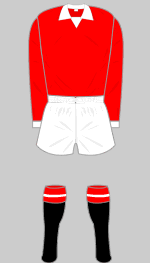
1976-1977 i
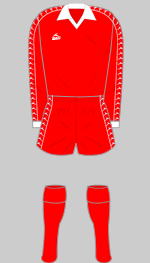
1977-1978 v
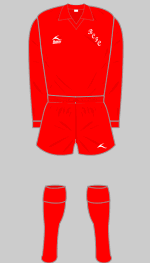
1978-1981 a l p
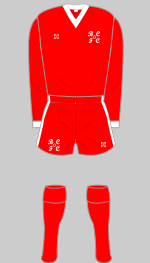
1981-1984 a h l t
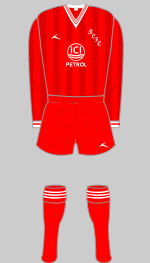
1984-1985 a l t
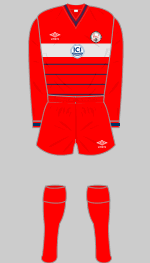
1985-1988 i j l
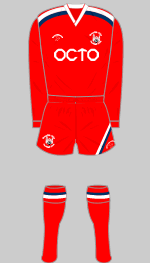
1988-1990 h n r
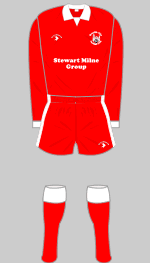
1990-1992 l
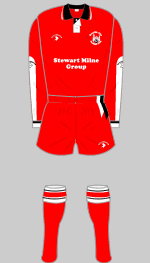
1992-1994 h l
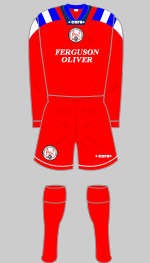
1994-1996 l o
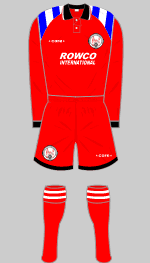
1996-1997 l o
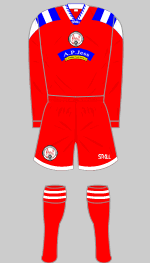
1997-1999 l
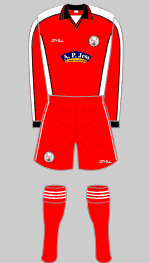
1999-2001 h l
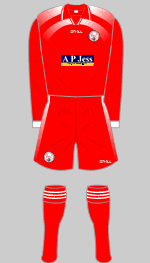
2001-2002 b c
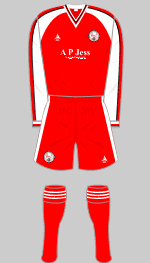
2002-2003 a
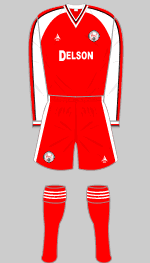
2003-2005a
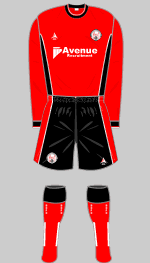
2005-2006 a
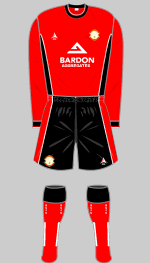
2006-2007 a q
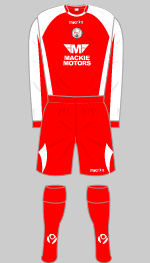
2007-2008 a
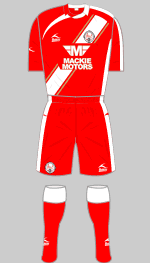
Aug-Oct 2009 a
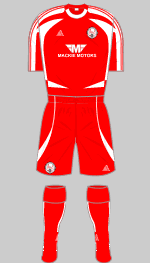
Oct 2009-2010 a
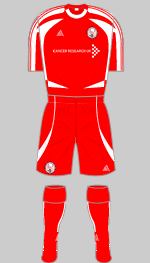
2010-2011 a
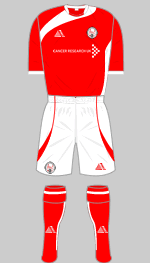
2011-2012 a
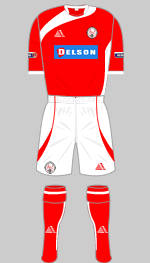
2012-2013 a
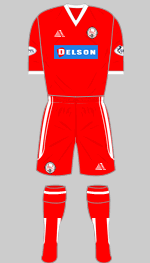
2013-2014 a t
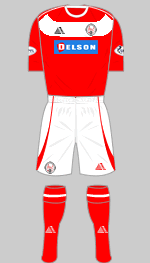
2014-2016 a
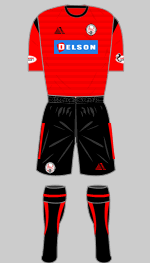
2016-2017 a
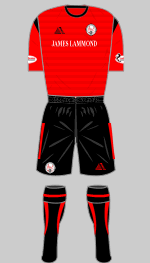
2017-2018 a
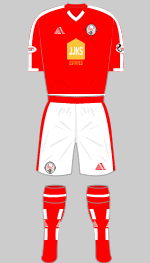
2018-2019 a
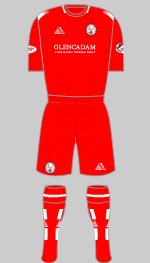
2019-2020 a
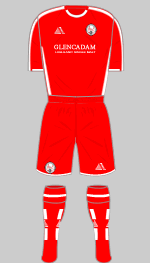
2020-2022 a
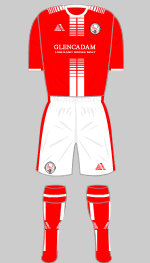
2022-2023 a
Background
 Brechin City was formed when
Brechin Harp and Brechin Hearts merged to form a single senior club at
the urging of a deputation from the Forfarshire FA. The colours registered with the Scottish Football Association were "light blue" but this is misleading. The term was used in Scotland to distinguish the many teams who played in dark navy blue (often referred to simply as "blue") from those who played in mid-blue (such as Rangers, who were known as the Light Blues.)
Brechin City was formed when
Brechin Harp and Brechin Hearts merged to form a single senior club at
the urging of a deputation from the Forfarshire FA. The colours registered with the Scottish Football Association were "light blue" but this is misleading. The term was used in Scotland to distinguish the many teams who played in dark navy blue (often referred to simply as "blue") from those who played in mid-blue (such as Rangers, who were known as the Light Blues.)
Brechin were admitted to the Scottish League in 1923 but returned to non-league competition when the Third Division was abandoned in 1926.
The club got a second chance in 1929 when Bathgate and Armadale resigned. Brechin, Montrose and Nithsdale Wanderers applied for the vacancies, Nithsdale failing to be elected. Brechin had a poor record, usually finishing near the bottom of the table although they did manage tenth place in 1939, their highest position prior to World War Two.
Brechin adopted black and white hoops in 1935, initially worn with plain white socks, which were highly unusual at the time. These were dropped in 1936-37, no doubt to the relief of their laundry women.
When the Scottish League resumed in 1946, Brechin
were placed in the new Division C (third tier), which comprised mainly
of reserve sides. In 1954 they were champions and earned their first
ever promotion. The following season they dropped their black
and white hooped shirts in favour of plain red. They finished in last
place and would have been relegated had Division C not been scrapped
at the end of the season. During the 1950s the team did rather better,
finishing regularly in the top six and winning the Qualifying Cup in
1951. The next decade is probably best forgotten: between 1962 and 1974
they finished 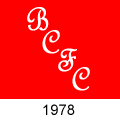 rock bottom no fewer than seven times. It was therefore
no surprise when they were placed in the new Second Division (now the
third tier) when the league was restructured after the creation of the
Scottish Premier Division.
rock bottom no fewer than seven times. It was therefore
no surprise when they were placed in the new Second Division (now the
third tier) when the league was restructured after the creation of the
Scottish Premier Division.
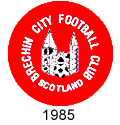 The first time that Brechin sported any kind of badge appears to have been in 1978 when the club's initials were embroidered on their shirts. When Barralan supplied their kit, the lettering was arranged in two horizontal lines rather than the more conventional diagonal.
The first time that Brechin sported any kind of badge appears to have been in 1978 when the club's initials were embroidered on their shirts. When Barralan supplied their kit, the lettering was arranged in two horizontal lines rather than the more conventional diagonal.
In 1983 this little club won a second championship
and promotion to the First Division 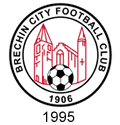 (second tier). Two years later a new badge appeared that featured Brechin cathedral and a football. This was updated about a decade later to a version more suited to print reproduction.
(second tier). Two years later a new badge appeared that featured Brechin cathedral and a football. This was updated about a decade later to a version more suited to print reproduction.
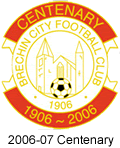 After four seasons
in the First Division, City went down once more and for the next few seasons
they bounced between the third and second tier, dropped into the new
Third Division (fourth tier) in 1995 only to return the following season.
They team moved between the Third and Second Divisions
on a regular basis but in 2017 they reached the Championship (second tier). As part-timers in a division of full-time professional teams, they found themselves completely out of their depth and finished the season without a single win and were relegated with a mere four points. Despite starting the following season as favourites to go back up, Brechin finished last to suffer back-to-back relegations.
After four seasons
in the First Division, City went down once more and for the next few seasons
they bounced between the third and second tier, dropped into the new
Third Division (fourth tier) in 1995 only to return the following season.
They team moved between the Third and Second Divisions
on a regular basis but in 2017 they reached the Championship (second tier). As part-timers in a division of full-time professional teams, they found themselves completely out of their depth and finished the season without a single win and were relegated with a mere four points. Despite starting the following season as favourites to go back up, Brechin finished last to suffer back-to-back relegations.
Glebe Park, which has a current capacity of just under 4,000, is noted for a hedge that runs down one side of the pitch.
In March 2020 Brechin were lying seven points adrift at the foot of League Two. When the SPFL membership eventually voted to curtail the season and to cancel the play-offs, City avoided the possibility of losing their place in the competition. They were not so fortunate the following season. After finishing ten points adrift at the foot of League Two they were well beaten by Kelty Hearts in the play-off final and were relegated to the Highland League.
Sources
- (a) Brechin City Official Site
- (b) Albion Rovers Official Site
- (c) BBC
- (d) Classic Football Shirts
- (e) London Hearts
- (f) e-bay
- (g) Stephen Mitchell
- (h) Ayr United FC - Images of Sport (Duncan Carmichael 2002)
- (h) SNSpix
- (i) Alick Milne
- (j) Ralph Pomeroy
- (k) Willie McKay
- (l) Donald Gellatly
- (m) The Dundee United Official Centenary History by Peter Rundo & Mike Watson (Birlinn 2009 ISBN 978 1 84158 828 5)
- (n) Keith Ellis
- (o) Old Football Shirts
- (p) Michael Gluck
- (q) Oleg Baranov
- (r) Scots Footie Cards
- (s) Brechin City: the Early Years (Alex Wood)
- (t) Ian McConnel
- (u) Cardhawk
- (v) Mark Alton
Crests are the property of Brechin City FC. Team photograph: Alex Wood Brechin City: the Early Years